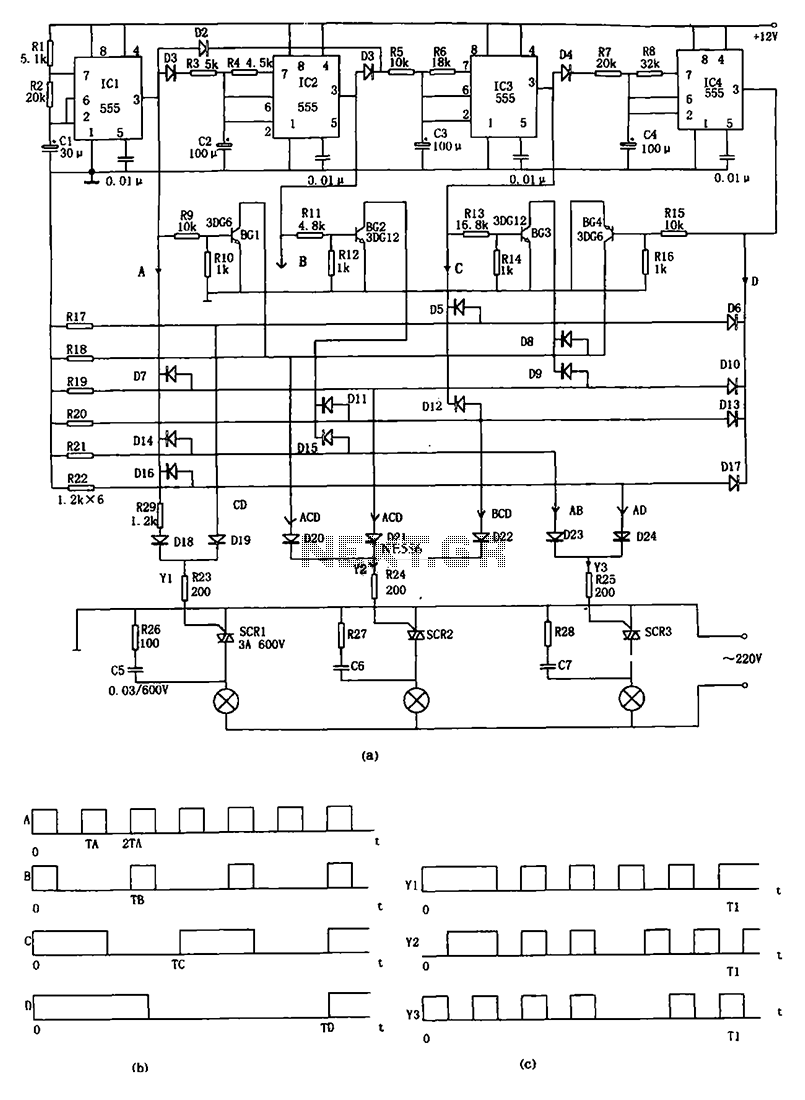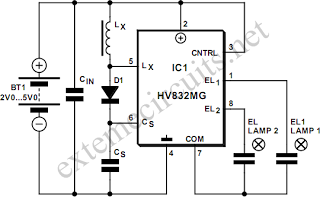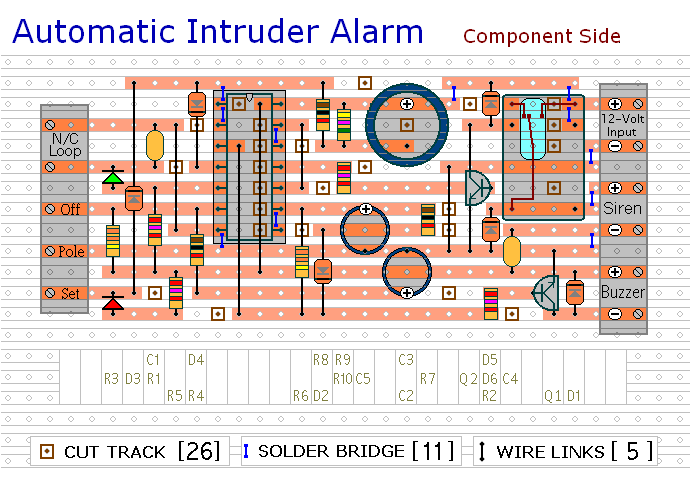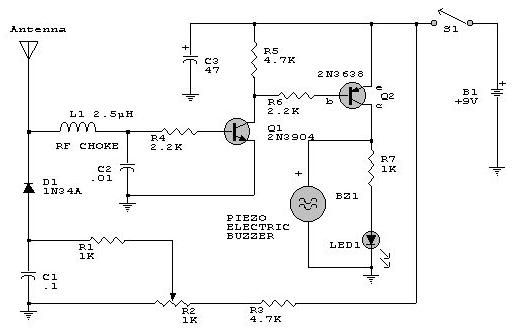
Simple Toy Organ using 555
This is a simple oscillator with multiple resistors in series. When you press any switch, the circuit starts oscillating. You can use variable resistors instead of the 1k resistors. Using variable resistors, you will be able to tune the frequency for each note. You cannot press two keys at the same time because the frequency will change. To make an electronic organ capable of pressing many keys at the same time, you may need to use thirteen 555 ICs. It is okay to use 9 to 12V as power, but it may be quite loud. It is not recommended to use a power supply as it may cause electrical shock. Also, a "hum" will be audible while it is in use.
The described circuit functions as a basic oscillator, utilizing multiple resistors configured in series to determine the oscillation frequency. The core component of this oscillator is the 555 timer IC, which operates in astable mode to generate a square wave output. The frequency of oscillation can be adjusted by incorporating variable resistors (potentiometers) in place of fixed resistors, allowing for fine-tuning of the output frequency to match musical notes.
Each switch in the circuit is connected to the trigger input of the 555 timer, enabling the oscillator to initiate oscillation upon activation. However, the design limits the ability to press multiple keys simultaneously, as each switch's activation alters the timing components and subsequently the frequency output. This characteristic is essential for the intended application as a simple electronic organ.
For a more complex instrument capable of polyphony (multiple keys pressed simultaneously), the use of multiple 555 timer ICs is necessary. Each IC would be dedicated to a single note, with its own set of resistors and capacitors to define its frequency. The recommendation of using between 9 to 12 volts as the power supply is standard for 555 timer circuits; however, caution is advised due to potential loudness and the risk of electrical shock when using higher voltage supplies.
Furthermore, the audible "hum" mentioned is a common artifact in oscillator circuits, often resulting from power supply noise or the inherent characteristics of the 555 timer. To mitigate this, additional filtering components such as capacitors may be employed to smooth out the power supply and reduce unwanted noise.
In summary, this simple oscillator circuit, while effective for generating sound, has limitations in terms of simultaneous key presses and noise levels, necessitating careful design considerations for more advanced applications in electronic musical instruments.This is a simple oscillator with multiple resistors in serie. When you press any switch, the circuit starts oscillating. You can user variable resistors instead the 1k resistors. Using variable resistors you will be able to tune the frecuency for each note. You cannot be able to press two keys at the same time because the frecuency will change. To make an electronic organ capable to press many keys at the same time, you may need to use thirteen 555 ICs. Is ok to use 9 to 12V as power but it may be quite loud. I do not recommend to use a power supply as it may cause electrical shock. Also a "hum" will be audible while it is in use. 🔗 External reference
The described circuit functions as a basic oscillator, utilizing multiple resistors configured in series to determine the oscillation frequency. The core component of this oscillator is the 555 timer IC, which operates in astable mode to generate a square wave output. The frequency of oscillation can be adjusted by incorporating variable resistors (potentiometers) in place of fixed resistors, allowing for fine-tuning of the output frequency to match musical notes.
Each switch in the circuit is connected to the trigger input of the 555 timer, enabling the oscillator to initiate oscillation upon activation. However, the design limits the ability to press multiple keys simultaneously, as each switch's activation alters the timing components and subsequently the frequency output. This characteristic is essential for the intended application as a simple electronic organ.
For a more complex instrument capable of polyphony (multiple keys pressed simultaneously), the use of multiple 555 timer ICs is necessary. Each IC would be dedicated to a single note, with its own set of resistors and capacitors to define its frequency. The recommendation of using between 9 to 12 volts as the power supply is standard for 555 timer circuits; however, caution is advised due to potential loudness and the risk of electrical shock when using higher voltage supplies.
Furthermore, the audible "hum" mentioned is a common artifact in oscillator circuits, often resulting from power supply noise or the inherent characteristics of the 555 timer. To mitigate this, additional filtering components such as capacitors may be employed to smooth out the power supply and reduce unwanted noise.
In summary, this simple oscillator circuit, while effective for generating sound, has limitations in terms of simultaneous key presses and noise levels, necessitating careful design considerations for more advanced applications in electronic musical instruments.This is a simple oscillator with multiple resistors in serie. When you press any switch, the circuit starts oscillating. You can user variable resistors instead the 1k resistors. Using variable resistors you will be able to tune the frecuency for each note. You cannot be able to press two keys at the same time because the frecuency will change. To make an electronic organ capable to press many keys at the same time, you may need to use thirteen 555 ICs. Is ok to use 9 to 12V as power but it may be quite loud. I do not recommend to use a power supply as it may cause electrical shock. Also a "hum" will be audible while it is in use. 🔗 External reference





